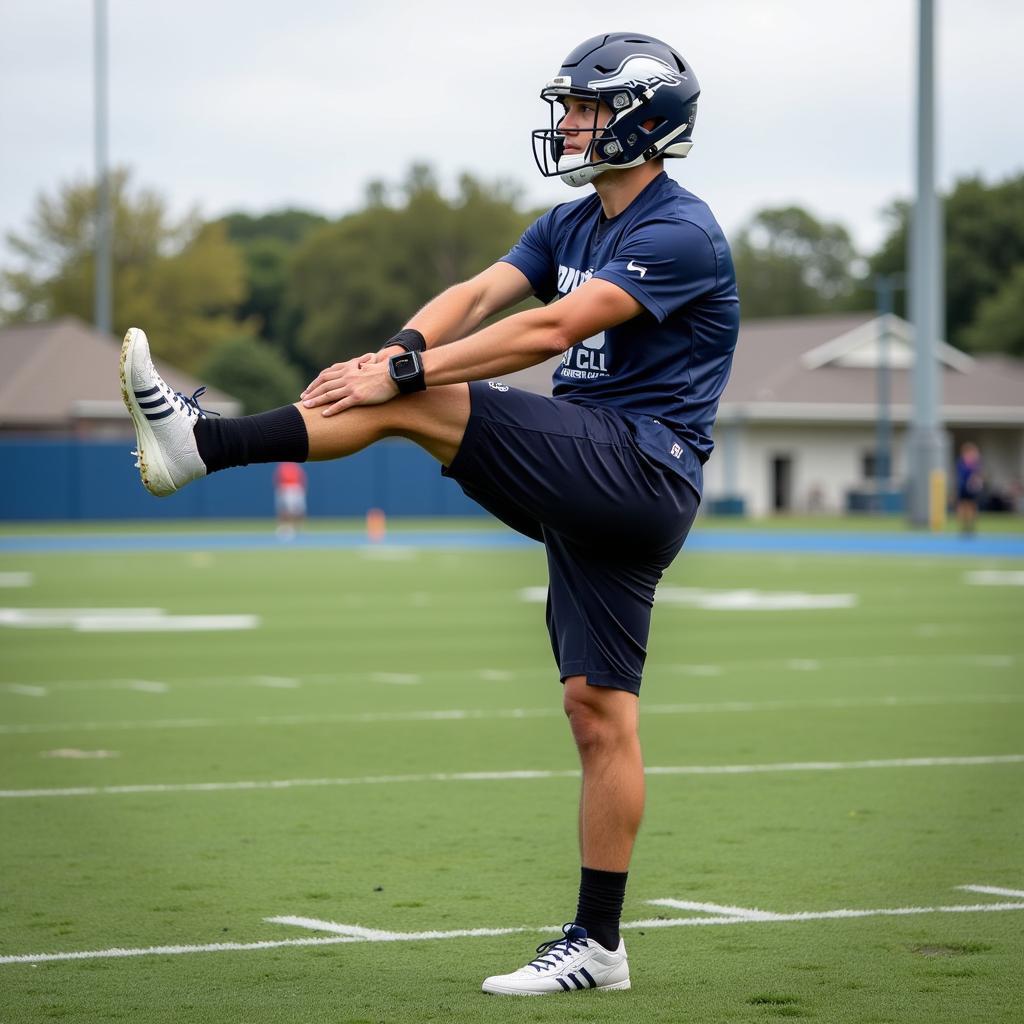Understanding Football Injuries: Focus on Muscle Strains
October 27, 2024Muscle strains are an unfortunate reality of professional football, often sidelining even the most talented players. These injuries occur when the muscle fibers are overstretched or torn, resulting in pain, swelling, and reduced mobility. While every player is susceptible, certain positions demanding explosive movements and high-intensity actions, like strikers, might be at increased risk.
What Causes Muscle Strains in Footballers?
Several factors contribute to muscle strains in football players:
- Insufficient Warm-up: Muscles unprepared for strenuous activity are more prone to strains.
- Overexertion and Fatigue: Pushing muscles beyond their limits, especially when fatigued, increases injury risk.
- Poor Conditioning: Inadequate muscle strength and flexibility heighten the vulnerability to strains.
- Previous Injuries: Prior muscle strains can increase the likelihood of recurrence in the same area.
- Improper Technique: Incorrect running or kicking techniques can place excessive stress on muscles.
Symptoms of Muscle Strains
Recognizing the signs of a muscle strain is crucial for prompt treatment:
- Sudden, sharp pain during or immediately after activity
- Localized pain in the affected muscle
- Swelling and bruising around the injured area
- Muscle spasms or tightness
- Weakness and limited range of motion
Severity and Recovery Time
Muscle strains are categorized into three grades, determining recovery time:
- Grade 1 (Mild): Involves overstretching of muscle fibers with minimal tearing. Recovery typically takes a few days to a couple of weeks.
- Grade 2 (Moderate): A partial tear of muscle fibers, causing more significant pain and swelling. Recovery may take several weeks to a few months.
- Grade 3 (Severe): A complete rupture of the muscle, often requiring surgery and extensive rehabilitation. Recovery can take several months or longer.
Preventing Muscle Strains: A Holistic Approach
Minimizing the risk of muscle strains involves a multi-faceted strategy:
- Thorough Warm-up: Engage in dynamic stretching and light cardio to prepare muscles for activity.
- Proper Conditioning: Focus on building strength, flexibility, and endurance through tailored training programs.
- Gradual Load Increase: Avoid sudden increases in training intensity or playing time.
- Adequate Recovery: Allow sufficient time for rest and muscle repair between training sessions and matches.
- Proper Nutrition and Hydration: Consume a balanced diet and stay hydrated to support muscle health and recovery.
 Football Player Performing Dynamic Stretches
Football Player Performing Dynamic Stretches
Treatment and Rehabilitation
Treatment for muscle strains focuses on reducing pain and inflammation, promoting healing, and restoring function:
- R.I.C.E. Protocol: Rest, Ice, Compression, Elevation are crucial immediately after injury.
- Pain Management: Over-the-counter pain relievers or prescription medications can help alleviate discomfort.
- Physical Therapy: A qualified physiotherapist guides rehabilitation through targeted exercises to improve strength, flexibility, and coordination.
Returning to Play: A Gradual and Safe Approach
Resuming activity too soon after a muscle strain can lead to re-injury and prolonged recovery. Collaboration with medical professionals is vital:
- Gradual Progression: Follow a structured return-to-play program that gradually increases activity intensity.
- Listen to Your Body: Pay attention to any pain or discomfort and adjust activity levels accordingly.
- Medical Clearance: Obtain clearance from a doctor or physiotherapist before returning to full participation.
Muscle strains are common yet potentially disruptive injuries in football. Understanding their causes, symptoms, and prevention strategies is crucial for players at all levels. By prioritizing proper preparation, listening to their bodies, and seeking timely treatment, footballers can minimize the impact of these injuries and stay in the game they love.